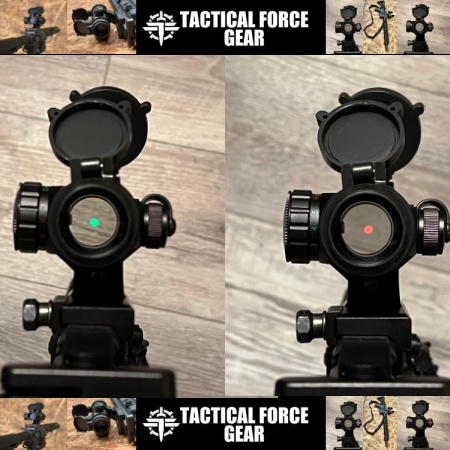Southern New Mexico is home to a little-known museum that many mistakenly think is in El Paso, Texas, rather than New Mexico. While it’s close to El Paso, the airport at Santa Theresa, New Mexico, is home to a world-class aviation collection, the War Eagles Air Museum.
This museum is the brainchild of John and Betty MacGuire who founded it in 1989 to collect, restore, and display historical aircraft. War Eagles is home to an impressive assortment of aircraft, as well as several outdoor static displays including a veteran memorial with a Vietnam-era UH34D helicopter.
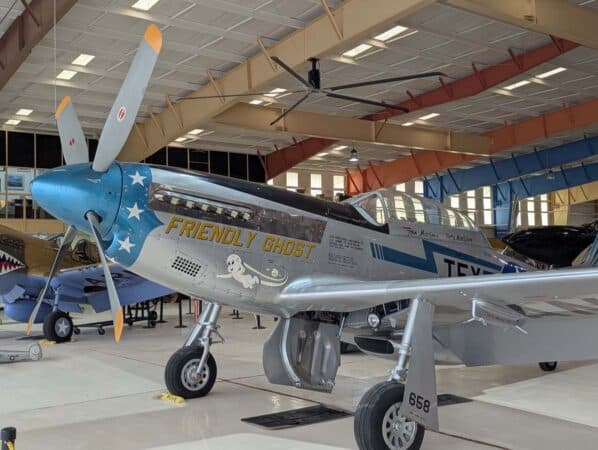
War Eagles houses more than 40 aircraft, ranging from the World War II era to jet fighters used throughout the Cold War-era conflicts. The collection includes fighters, bombers, utility aircraft, trainers, helicopters, and civilian aircraft, along with vintage and military vehicles, and several informative displays.
Walking into the hangar is a step back in aviation history. Upon entering, you see a gleaming black P-38 Lightning with a massive American flag hanging from the rafters. Every square foot has beautifully restored aircraft from a bygone era, and the sight of these highly polished aircraft is amazing, looking as if they’re all fresh from the assembly line. The list of aircraft is extensive, and there are some rare and storied examples on display.
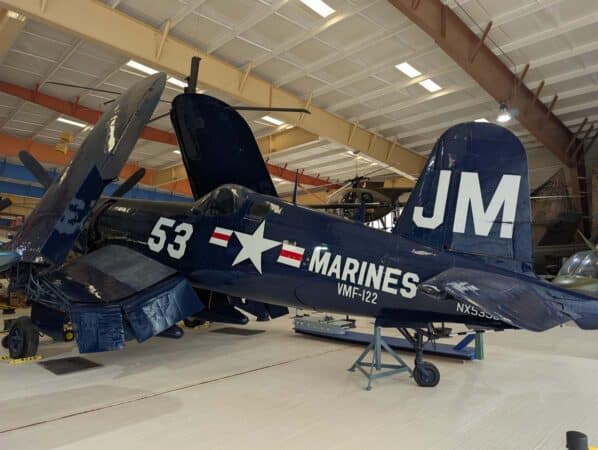
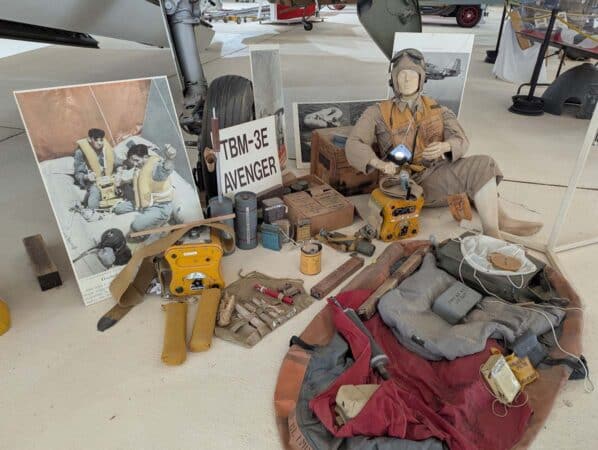
A short list of aircraft that were part of the history of WWII include the War Eagles’ DC-3, which has a fascinating service life and continued its story in civilian guise after the war. An A-26, P-40 Warhawk, P-51D, F4U Corsair, Hawker Sea Fury, and Stinson Reliant round out the impressive WWII lineup. This particular Stinson was a Lend-Lease asset that the British actually used to fly spy missions into France.
Taking a leisurely stroll through the museum you’ll see:
A TF-51D Temco, a dual seat P-51 Mustang (“Friendly Ghost”) built to train fighter pilots. This plane was rebuilt from a pile of parts discovered in Indonesia. It is one of two in existence.
The P-40 (“Holding my Own”) is in American Volunteer Group camouflage and is painted with the famous “Flying Tiger” teeth on the nose. This is the actual tail of the P-40; this plane is displayed as is in the Museum of the Pacific in Texas.
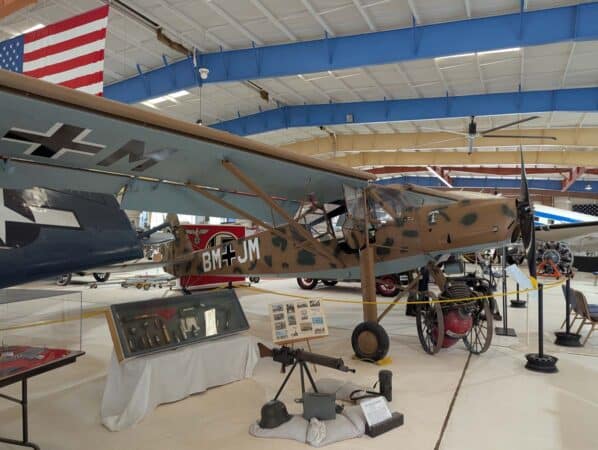
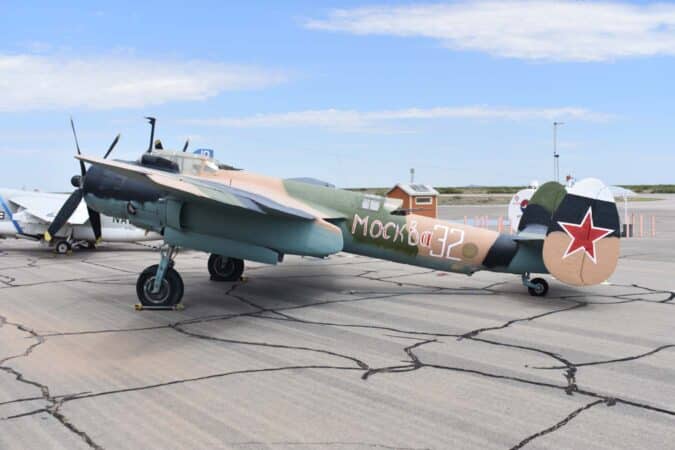
The F4U Corsair, aka “Whistling Death,” is in a deep blue Marine Corps livery and saw combat in the Pacific theater, launched from the USS Intrepid, as well as in the Korean War. This is another example of a warbird the museum is named after.
There’s a Grumman Avenger with folded wings displayed along with a rescue-at-sea exhibit highlighting the equipment a downed pilot would have when awaiting rescue while floating in the Pacific.
A Fieseler Storch, the German workhorse utility aircraft of WWII, sits on the floor. This Storch is painted in the colors of the famed Afrika Korps. It was a Storch that was used to rescue Benito Mussolini from the Hotel Campo Imperatore 6,900 feet up in the Gran Sasso mountains in September 1943.
The DC-3 mentioned earlier started life as a C-47 Dakota of the 9th Air Force in 1944. This plane flew paratroopers during the D-Day invasion and dropped British Paras into the Netherlands on the ill-fated Operation Market Garden. After the war, the plane was converted into a passenger plane and once belonged to the guru Bhagwan Shree Rajneesh.
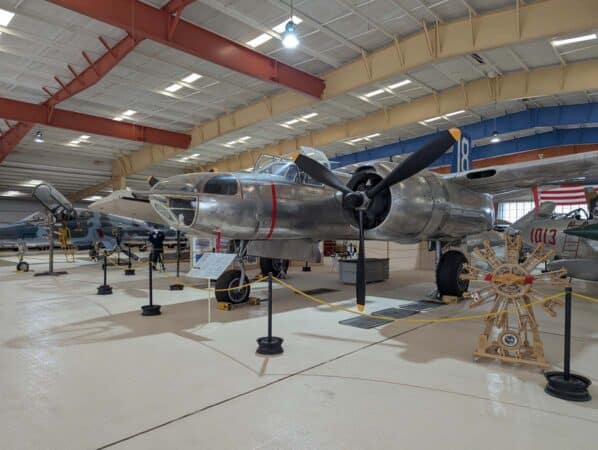

You’ll see an A-26C Invader — the bomber variant of the A-26A. The “A” version was an attack aircraft with nose guns as well as bombs and rockets, whereas the “C” version seen here had its 50-caliber machine guns removed and replaced with a transparent bombardier nose to allow for accurate bombing with the Norden bomb sight. This Invader fought not only in WWII but also in Korea, Vietnam, Bay of Pigs invasion, and Congo.
Along the back wall is a North American P-51D Mustang. This warbird was part of the U.S. Army Air Force in 1944. The entrance of the Mustang in WWII enabled the fighters to escort heavy bombers deep into Germany, giving the Allies complete air superiority.
There are two Stinson aircraft on display. One is an L-5 Sentinel and the second is an SR-10 (V-77) Reliant. During WWII, this Reliant was used first as a trainer and then more notably to clandestinely fly into Nazi held Europe with personnel and equipment. After it was released from service, this particular Reliant was once owned by Apollo 8 mission commander Frank Borman.
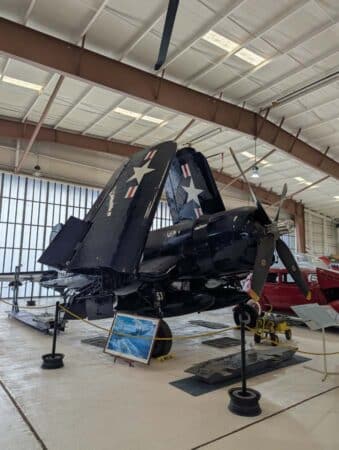
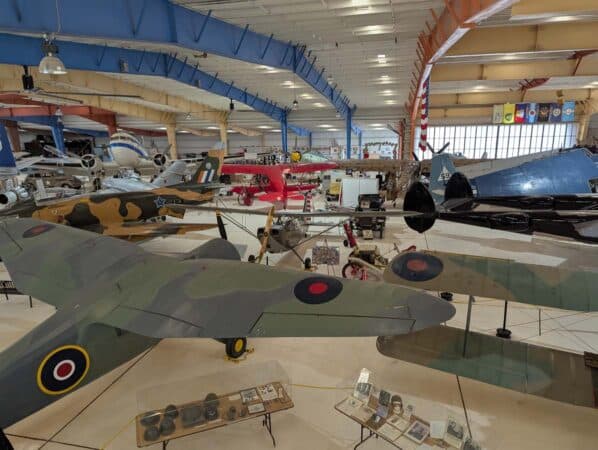
Outside is a rare Tupolev TU-2S (Bat) painted in authentic Russian winter paint scheme. The “Bat” was considered the best Russian bomber of WWII. This particular aircraft was found in a cave in China, and we can only speculate as to the effort it must have taken to bring it to the U.S.
The Cold War exhibits include Russian MiG-15 (Fagot) and MiG-21(Fishbed) and American F-84 (Thunderstreak), F-86 (Sabre), and FJ-2 (Fury).
The Vietnam war “Dust Off” exhibit features an UH-1V “Dust Off” (medivac) display with a Loach flying top cover as a gunship of the famed 11th Armored Cavalry Regiment.
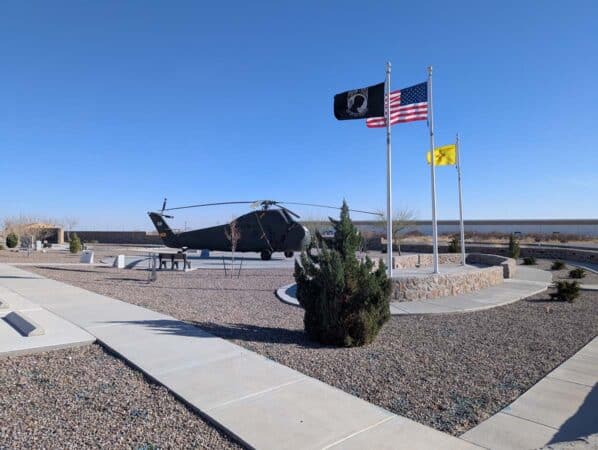

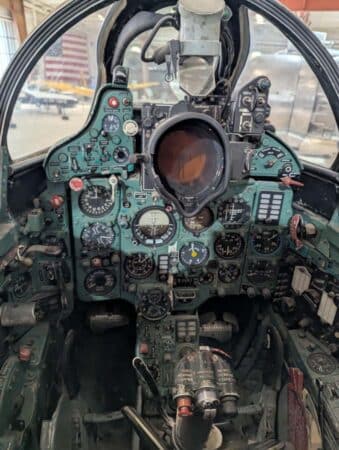
This vast and varied collection includes many other military trainers and civilian aircraft all in pristine condition — there’s almost too many to list. In addition, for classic car buffs, the museum houses 20 vehicles including several antique military examples. There’s also a host of related exhibits such as women in aviation, survival at sea, the workings of an ejection seat and a radial engine, a Military Police checkpoint, and others. The outdoor displays and Vietnam memorial complete a full and immersive experience.
If you’re ever in the Southwest, then a visit to War Eagles is a must-see for any aviation or history enthusiast. The museum boasts an excellent docent staff and gift shop along with accessible working hours.
Read the full article here

![War Eagles Museum: A Hidden Gem in the Desert [VISIT]](https://gunreviewtactical.com/wp-content/uploads/2025/04/50-1200x675.png)
